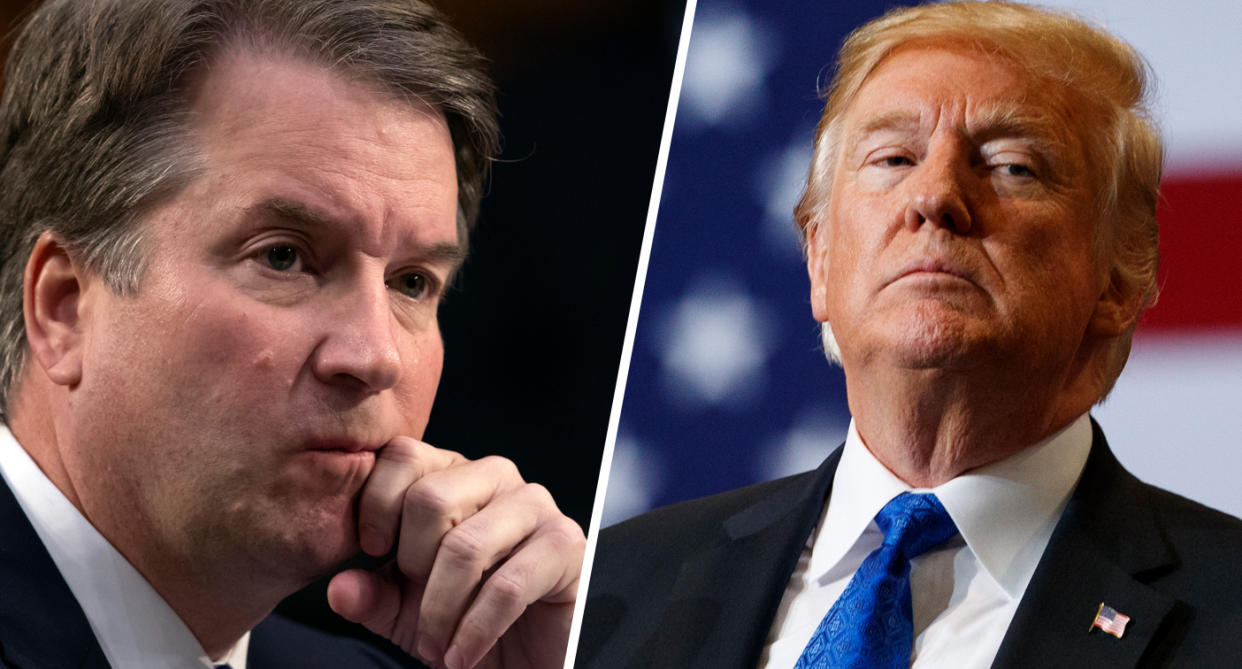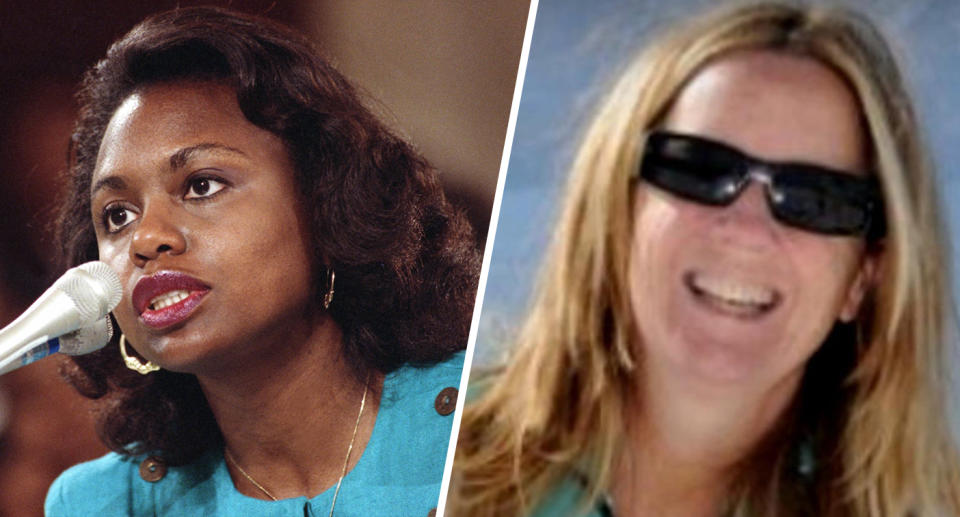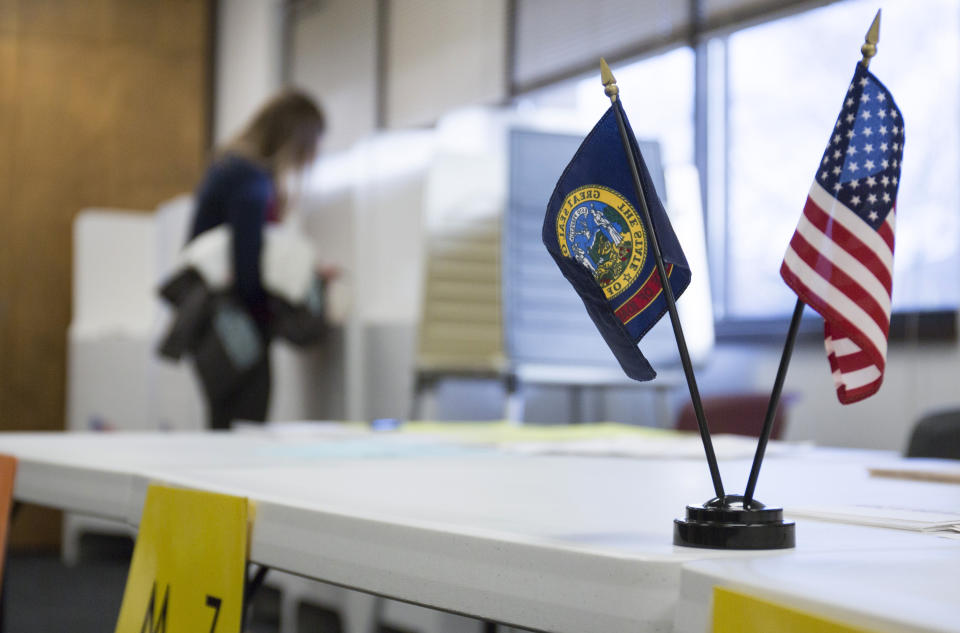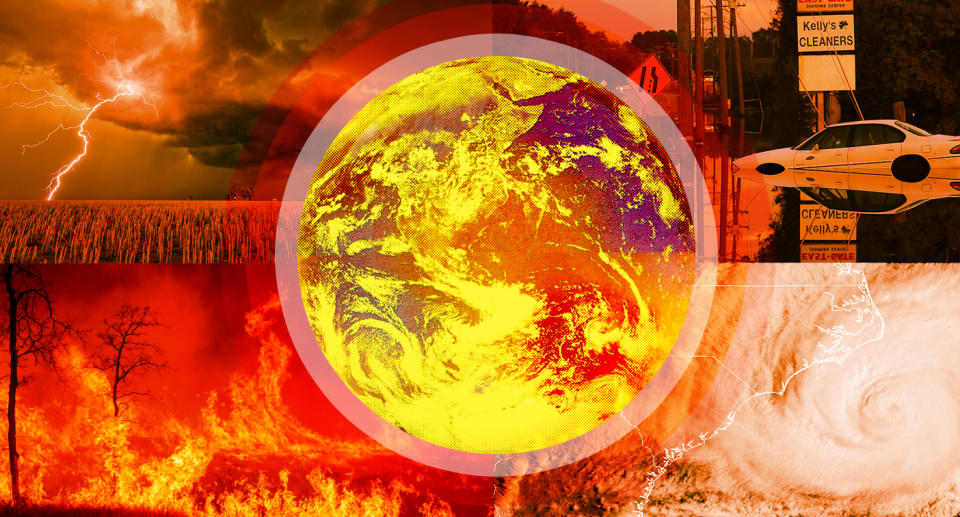Whatever happens to Kavanaugh, Trump has already made 2018 the Year of the Woman


Top Story
It’s the question on every pundit’s mind: How will the outcome of the crucial 2018 midterms be affected by next week’s potential face-off — or non-face-off — between Supreme Court nominee Brett Kavanaugh and Christine Blasey Ford, the California professor who has accused him of sexually assaulting her when they were teenagers in Maryland?
Seeking answers, many media types have looked back to October 1991, when the Senate voted to confirm Justice Clarence Thomas to the U.S. Supreme Court, after an all-male Senate Judiciary Committee had outraged millions of women by hurling dismissive, even hostile questions at a former subordinate, attorney Anita Hill, who testified that he had sexually harassed her.
Almost exactly one year later, on Nov. 3, 1992, the American people elected more new congresswomen (24) and more new female senators (4) than in any other single election in history — nearly doubling the number of women in the House and tripling their ranks in the Senate. That year also saw record numbers of women run for office, win their parties’ nominations and turn out to vote. It came to be known as the Year of the Woman, and widespread backlash to the Thomas-Hill controversy was viewed as the main reason why.

Many Democrats are hoping that the results of the 2018 midterms will be even more favorable for them, and polling suggests they might be right. If it happens, historians may look back on the Ford-Kavanaugh hearings as the turning point, but they’ll be missing the point. The trend has been building since long before Kavanaugh’s nomination, and it has to do less with him than with the man who nominated him for the Supreme Court: Donald Trump.
Politicos who liken Thomas-Hill to Kavanaugh-Ford tend to overlook one simple fact: The earlier spectacle unfolded a full year before the election. This one is happening just a month and a half out. In 1991, Thomas-Hill was the inciting incident — the spark that inspired female candidates to run, and rank-and-file women to vote, in the following year’s election.
Trump has already been serving the same function in this election cycle. And he’s been generating more backlash among women than Thomas or his Republican defenders ever did.
The numbers tell the tale. More than 3 million Americans participated in women’s marches on Inauguration Day in 2017; more than a million marched one year later.

That’s a remarkable surge in activism — and it’s been mirrored by a similar surge in candidate recruitment. In 2018, 53 women sought nominations for the Senate; 476 for the House; and 61 for governor, according to the Rutgers University Center for American Women and Politics. Each total broke a previous record. And so did the number of women primary victors who are going on to the general election: 22 in the Senate, 235 in the House and 16 for governor.
It’s worth noting that most of these candidates and nominees have not been Republicans. Of the 235 women running for Congress, 183 are Democrats. That compares to 120 women on the Democratic line in 2016, the previous record — and 52 women running as Republicans this year. Fifteen of the 22 female Senate candidates are Democrats, and 12 of the 16 gubernatorial picks.
Voters, meanwhile, seem to be on the same page. Trump’s approval rating among women is an anemic 36 percent. In late August, a Washington Post-ABC News poll found that 58 percent of registered female voters intend to cast a ballot for a Democrat in November (compared to 45 percent of men). And national surveys now routinely show that 60 percent or more of college-educated white women — the voting bloc that will likely decide dozens of elections in key suburban swing districts — prefer Democrats for Congress. According the Atlantic’s Ronald Brownstein, that’s the “biggest share ever by far.”
All well and good, a Republican might respond. But will these women actually vote? It appears they already have. In fact, according to Axios, more Democrats turned out in this year’s House primaries than Republicans — something that hasn’t happened since 2008. As a result, David Brady, an electoral politics expert at the Hoover Institution, now predicts “a 7 percent Democratic turnout advantage in November” — one he expects to be “driven by women, and particularly independent women.”

The lesson here is that while the last-minute Kavanaugh circus may very well affect voter enthusiasm in the homestretch — it’s easy to imagine Democratic backlash if Republicans railroad Ford, or if Kavanaugh’s nomination is withdrawn and the fate of his replacement hangs on who controls the Senate — this year’s larger dynamics around women voters and candidates took shape long ago.
As it turns out, the nomination and election of a man accused of sexual assault and harassment by at least 19 women — a man who once boasted of grabbing women by their genitals and who has continued while president to refer to members of the opposite sex as “dogs” — might have been the decisive factor in ushering in a second Year of the Woman. And it’s too late for Republicans to undo that.
Verbatim
Hot Seat
Minnesota’s Third Congressional District: For the first time (we think) this campaign cycle, a campaign has turned to cryptozoology to make a point about their opponent, reports Yahoo News editor Chris Wilson. In the race for Minnesota’s Third District, which curls through the western suburbs of Minneapolis, Democratic challenger Dean Phillips posted an ad on social media starring Bigfoot (aka Sasquatch), the mythical humanoid of the Northwest forests who is only ever glimpsed from a distance in blurry black-and-white photographs. The ad implied the same thing about Phillips’s opponent, incumbent Republican Rep. Erik Paulsen, who went nearly six years without an in-person town hall. “I thought I was pretty good at hiding,” Bigfoot (actually, a local actor in a rented costume) says. “Does Erik Paulsen really exist? I mean, where’s the proof?”

The ad has done well on social, earning over 7,000 retweets on Twitter, although the Phillips campaign didn’t say if a version will run on broadcast. It comes at a time when the Phillips campaign seems to be gaining momentum. Minnesota’s Third was a big target for Democrats after Hillary Clinton won it by 9 points in 2016, and Phillips, a businessman and liquor heir, appears to be in a good position against Paulsen, who won the seat in 2008. The nonpartisan Cook Political Report flipped the race from a tossup to Lean Democrat this week as a New York Times poll found Phillips with a 9-point lead, 51 to 42. Paulsen has attempted to separate himself from Trump on tariffs but has voted with the White House 98 percent of the time per 538’s tracker, including “yes” votes on the Republican tax plan and repealing and replacing Obamacare. He is near the top of the list of total campaign donations coming from PACs. Phillips has focused his campaign on campaign finance reform and expanding Medicare.
The Third is just one of many competitive races in Minnesota, as Democrats also attempt to flip the neighboring Second District, where Democrat Angie Craig is polling slightly ahead of Rep. Jason Lewis in a rematch of their 2016 race that Cook Political Report also recently moved to a Lean Democrat rating. Democrats are defending open seats in the First (along the southern border) and Eighth (the northeast of the state along Lake Michigan), with both races currently pegged as tossups. The flurry of tight House contests is in addition to a gubernatorial race (the incumbent Democrat, Mark Dayton, isn’t running for reelection) and the special election to fill former Sen. Al Franken’s seat. — Christopher Wilson
Verbatim

Best of the Rest
The Latino factor: There has been no shortage of polls showing that Latinos disapprove of Trump, for reasons ranging from his hard-line immigration policies to his administration’s lackluster response to Hurricane Maria. And there has been no shortage of columns predicting that their votes could be decisive in November.
But in the wake of a recent Quinnipiac poll showing that Latino voters are less inclined than African-Americans, millennials, women or Democrats more broadly to see Trump as unfit for office, some experts are questioning whether this notoriously low-turnout bloc will actually show up on Election Day and help deliver Congress to Nancy Pelosi & Co.
The answer could ultimately make the difference between a blue wave or a blue ripple.
The Texas senate contest is a key race to watch. Democratic Rep. Beto O’Rourke of El Paso has been running a surprisingly strong campaign against Republican incumbent Ted Cruz. But even though he speaks fluent Spanish and represents a heavily Latino district, O’Rourke has so far been underperforming among Latino voters. In the March Democratic primary, for instance, he won less than two-thirds of the statewide vote — and lost several key border counties with large Hispanic populations to Houston activist Sema Hernandez.

Meanwhile, since 2016, there’s been no surge of new Latino voters in Texas’s urban counties or in the heavily Latino counties of the Rio Grande Valley, according to voter registration data.
If you compare recent poll results, you can see how much of an impact Latino voters could ultimately have in the Lone Star State. A different Quinnipiac poll released this week showed Cruz leading O’Rourke by 9 percentage points overall; those numbers were reversed among Latino voters, who prefer O’Rourke 54-45 percent. Asked whether they have a favorable impression of O’Rourke, 48 percent of Latinos said yes and 35 percent said no; asked whether they approved of Cruz’s job performance, Latinos said no by a modest margin (50-46).
Yet a Public Policy Polling (PPP) survey released at the same time tells a different story. Overall, PPP found a much closer race: 48 percent for Cruz vs. 45 percent for O’Rourke. Latinos made much of the difference. Not only was O’Rourke’s favorability rating higher in the PPP poll (+18) than in the Quinnipiac poll (+13) — Cruz’s job approval was vastly lower, with a full 60 percent of Latinos disapproving and only 21 percent approving. This likely explains why Latinos in the PPP poll preferred O’Rourke over Cruz by a 25 percent margin — and why PPP found O’Rourke within striking distance.
In November, O’Rourke’s fate might come down to which reading of the mood among Latino voters is more accurate — and whether he can convince them to act . And given how many seats Democrats are targeting in heavily Latino areas, from Texas to Arizona to California, he’s hardly alone. Control of Congress could hang in the balance.
Bannon is back: The new film “Trump @War” is Steve Bannon’s latest effort to keep Trump in the Oval Office — and himself at the volcanic core of national affairs, reports Yahoo News National Correspondent Alexander Nazaryan.
Directed by the former Trump strategist and featuring cameos by longtime Trump allies like Corey Lewandowski, his first campaign manager, and Michael Caputo, another close adviser, “Trump @War” is an expertly produced, 70-minute campaign commercial, one that recounts Trump’s greatest hits, from tax cuts to North Korea, while taking every opportunity to troll the forces of the anti-Trump resistance.
Bannon says he will screen the film as a way to get out the vote in November, when the Democrats are projected to retake the House of Representatives. Some say they could even make a credible bid for control of the Senate. To keep that from happening, GOP voters will have to show the same enthusiasm for congressional candidates that they did for Trump. They haven’t so far, which has Bannon worried. “There’s a sense of complacency” among Trump supporters, he says. “They don’t see the threat of losing the House.”

“This is not a persuasion election,” Bannon says. “This is all about getting your base out.” To that end, he says he now runs “a very sophisticated war room” whose planning sessions include some two dozen individuals. Among them is Sam Nunberg, the early Trump aide who supposedly came up with the border wall idea, and Patrick Caddell, President Jimmy Carter’s onetime pollster. “We run the only war room that’s out there” backing the Trump agenda, Bannon says. (The claim is difficult to confirm, given the number of pro-Trump groups of varying size outside the White House.)
For all its high production values, “Trump @War” is an unmistakable sign of anxiety over a base that has begun to show signs of Trump fatigue. Bannon wants them “totally jacked up,” ready to vote as well as actively campaign in their communities for Republican candidates.
Trump has mocked the notion of a Democratic landslide, predicting a “red wave” instead. Bannon, though, is remarkably frank about the lack of enthusiasm among conservatives. And he is just as open about his envy of progressives, who are organized and energized. “They do understand the stakes,” he says of his enemies. “They understand that Trump is in their personal life 20 or 30 years from now unless they stop this program. They’ve gotta stop Trump in November. You don’t need to tell the left the stakes, you don’t need to tell them the urgency. They’re woke.” — Alexander Nazaryan
How climate change could swing key House races: Voters, especially those in coastal communities at risk from rising sea levels, are starting to take climate change more seriously, reports Yahoo News’ Michael Walsh — even some Republican voters.
The Yale Program on Climate Change Communication, for instance, recently found that concern about manmade climate change has increased among moderate Republicans by 15 percentage points since May 2017 and among conservative Republicans 7 points since October 2017.

Environmental groups like the League of Conservation Voters (LCV) and the Environmental Defense Action Fund are promoting surveys that suggest that candidates can swing competitive races by publicly denouncing the Trump administration’s attacks on environmental regulations. According to a recent poll by the Global Strategy Group, this messaging could shift vote choice by 11 percent in the environmentalist candidate’s favor in 20 battleground House districts.
“Just look at Florida, where toxic algae has become a top election issue. Or California, where anti-environment members of Congress like Mimi Walters — who has voted against nearly every attempt to address the climate crisis — suddenly signed a letter calling for climate action as the state faces devastating wildfires,” Pete Maysmith, LCV’s senior vice president for campaigns, told Yahoo News. “Climate is clearly on the ballot, and Republican leadership’s many environmental attacks could ultimately cost them control of the House.”
Donna Shalala, who served as secretary of health and human services under President Bill Clinton, is the Democratic nominee in a tight race for Florida’s 27th Congressional District, which includes a large portion of Miami.
“South Florida is ground zero for sea-level rise and continues to be at risk with the effects of climate change. We are uniquely positioned between two national parks — Everglades and Biscayne — both of which feel the effects of climate change every day,” Shalala told Yahoo News. “Without question, it will be a critical issue for voters in FL-27, because the voters want to send someone to Washington who will get something done to protect our environment and combat climate change.” — Michael Walsh

Read more from Yahoo News:




